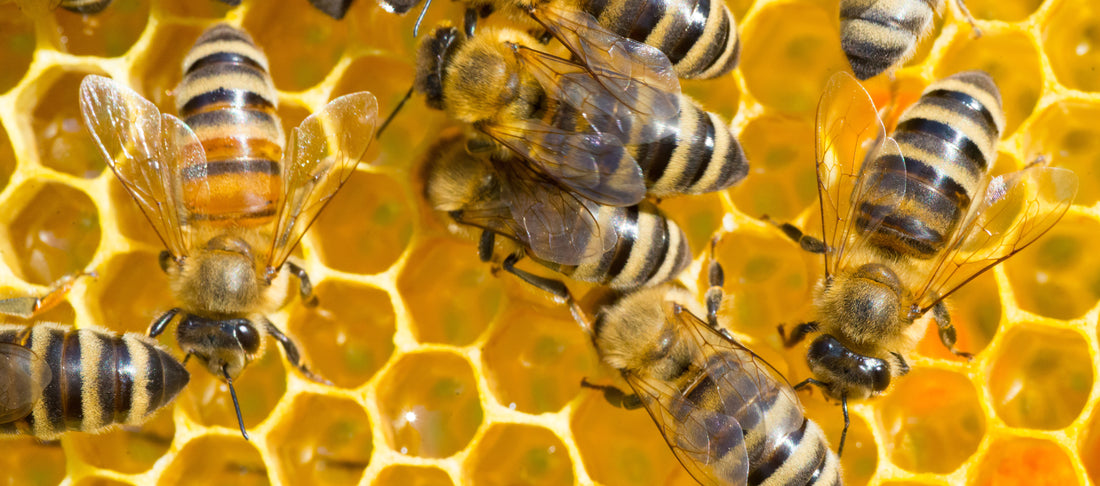
What’s with the honeycomb shape?
Share
Simple and beautiful—the honeycomb’s hexagonal shape has marveled engineers and designers for years. It’s not just the beauty that has mathematicians scratching their heads; it’s the precision of the bee’s work. Can bees do math? How are they able to form these perfectly uniformed hexagonal cells? The answer to the mystery can be sourced back over 2,000 years ago by Marcus Terentius Varro, a Roman soldier, scholar, and writer who proposed a solution he titled ”The Honeybee Conjecture.” It stated that the hexagonal structure presents the most efficient way to fill a plane so, inherently the bees look to construct the least wasteful storage system. Fast forward to 1999, the American mathematician Thomas Hales proved Varro right by mathematically proving that hexagons have the least-perimeter way to enclose unit areas on a plane, so it’s naturally efficient. This post will explore how bees form their hives and why they inspired our Founder, John Paulick.

While it may appear that bees are adept at perfecting precise angles, it’s more simplistic than we think. When bees start constructing honeycombs to store honey, the cells begin as circles. Within seconds the wax cells transform into hexagons, but how? While the bees warm the wax, allowing them to turn it into a lava-like, flowing substance. Once heated—the wax begins to flatten and then cool in place, forming hexagonal-shaped cells that merge to create the full comb.
But why a hexagon? It’s been seen as a joke that bees can do math, but in some scientific studies, it has been confirmed that they can, in fact, do math! Bees aren’t limited to hexagons and could also construct squares or triangles, but as discussed earlier—hexagons are the least wasteful and the most efficient form for the creatures to create. When executing the build of an entire hive, bees opt to make the most of their material and spacing. Other shapes run the risk of wasted, negative space, and we can speak for bees—they don’t like to be wasteful. Hexagons, versus squares and triangles, are the most compact option for the bees’ housing, and it’s “cheaper” than other shapes, with all of the walls being shared with surrounding cells. Beeswax is considered expensive even to bees; each bee has to consume roughly 8 oz of honey to produce just 1 oz of wax! Not only can bees do math, but they can also manage their costs! Hexagons create a sturdy and secure structure for bees to store their prized honey, and protect the collective hive and their young.

When we’re talking about our WineHive, we’re looking at an already constructed cell—you don’t need to heat wax to mold and model your wine storage rack. And you get to store bottles of your favorite wine instead of honey! Investing in a WineHive storage system, you welcome the convergence of nature, design, and artwork into your space. Not unlike the honey bee’s honeycomb, you have the freedom to build and grow your Hive to fit your space and needs. Design the Hive of your dreams with our Hive Builder application, or start with one of our 5 or 20 cell Hive Starter kits. Similar to honey bees’ hives, your WineHive is the most efficient method of storing your prized bottles, making the most of any space you’ve allocated for wine storage.
Whether you want to integrate the modular units into a current design or if you're going to create a piece of art, WineHive is your answer. Enjoy the ability to have a stunning tabletop display, construct an innovative piece of furniture, or make a statement with a wall-mounted display. Our cells are available in two colors that can match your color scheme or give you a reason for a redesign.

